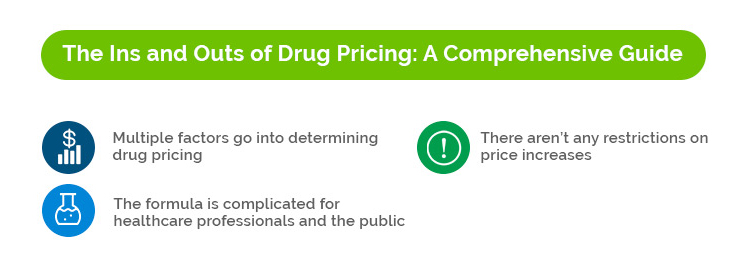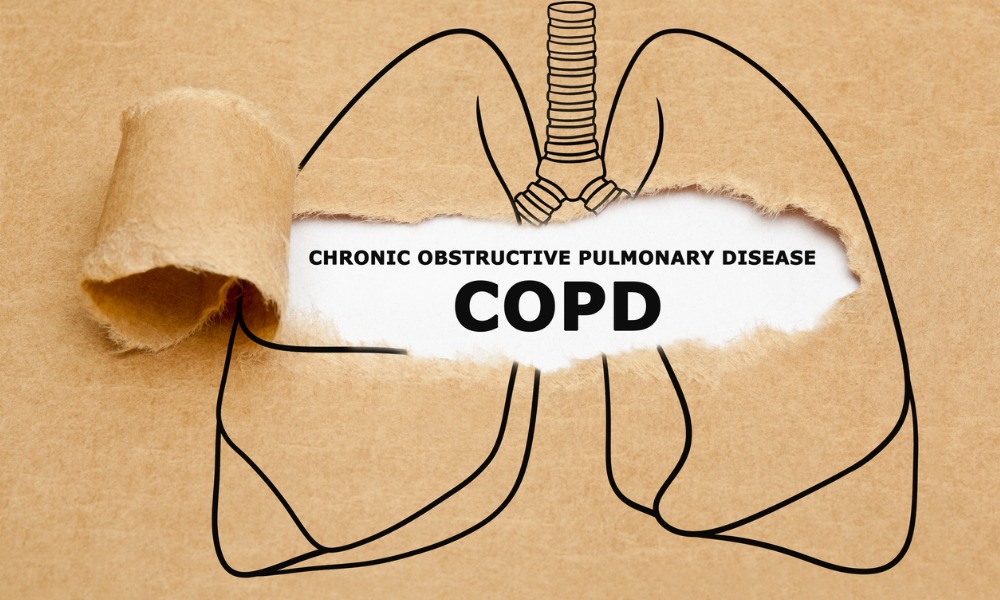
Are you looking to learn more about drug pricing but don’t know where to start? Here’s a comprehensive guide that will provide clarity on this crucial issue.
Drug prices in the United States are among the highest in the world, 3.44 times more expensive than the median price in other high-income countries.
The lack of regulation around drug pricing has allowed the pharmaceutical industry to monopolize the market, leading to higher patient costs. This has caused some patients to skip doses, leave prescriptions unfilled, or forgo needed care altogether.
Understanding how United States drug prices are set is critical for policymakers, providers, and patients to find ways to reduce costs. Unfortunately, the process is complicated and often difficult to understand. Read on to learn about the main drivers of drug pricing in the United States.
The rising cost of drug prices in the U.S. and its effects
In the U.S., prescription drugs cost an average of , $1126 per person compared to $285 in the United Kingdom and $738 in Canada in 2019. There are several reasons for the high cost of drugs in America.
Zero regulation of prices
Big Pharma companies in the U.S. call the shots when setting their product prices. The government has no say in how much a company can charge for a drug. The only time the government steps in is when it comes to negotiating prices for drugs covered by Medicare.
This hands-off approach to drug pricing contrasts with other developed countries where governments regulate the prices of all drugs. In Europe, for example, countries use a system of price controls and reference pricing to keep costs down.
Lobbying power of pharma companies
Pharmaceutical companies are some of the most powerful lobbyists in Washington. They spend millions of dollars annually to influence lawmakers and shape policies that benefit their bottom line. In 2018, the industry spent a record $220 million on lobbying, more than any other sector.
All that money buys Big Pharma a lot of influence. As a result, drug companies have been able to stave off any meaningful reforms that would put a dent in their profits.
The unending battle between generic and branded drugs
Brand-name drugs are often much more expensive than their generic counterparts. Generics are exact copies of brand-name drugs that have gone off-patent. They have the same efficacy, dosage, strength, and safety profile as the brand-name drug, but they cost a fraction of the price.
However, since brand names have more marketing power, most patients opt for the more expensive option as they deem it more effective. As a result, patients spend billions of dollars yearly on brand-name drugs when they could get the same treatment for a fraction of the cost with generics.
The rising drug costs have a ripple effect on the entire healthcare system and affect Americans in several ways:
- Skipping doses or not filling prescriptions: According to a new poll from the Kaiser Family Foundation, one in four Americans say they cannot take meds as prescribed due to cost.
- Higher premiums and out-of-pocket costs: Americans with private health insurance shoulder more of the burden when it comes to drug costs. Since 2010, deductibles have grown by nearly 50%, while wages have only increased by 11%.
- Forgoing other critical care: The high cost of drugs also means people skip other essential care, like doctor’s visits, tests, and dental care. In fact, one in five Americans says that due to cost, they haven’t gone to the doctor when they needed to.
- Declining health and well-being: The financial stress of high drug costs can take its toll. Without access to affordable meds, those with chronic conditions are more likely to experience a decline in their health.
These effects of high drug prices are counterproductive to the purpose of pharmaceutical medications – helping Americans stay healthy. So why are prices so high?
Factors that determine drug prices
The ambiguous nature of the United States drug pricing system makes it hard to understand how prices are set. Negotiations often happen behind closed doors between drug companies, insurers, and pharmacy benefit managers (PBMs), locking patients and physicians out of the process. However, some key factors determine the prices of drugs in the United States.
Supply and demand
One of the most fundamental laws of economics is that the price of a good is determined by supply and demand. If there’s high demand for a drug but a low supply, the drug price will be high. The converse is also true.
A drug’s usage at any given time can influence its price. Since pharma companies that manufacture drugs control the final product supply, they have a lot of power to set prices as they see fit. And they often use that power to maximize profits.
Most often, pharma companies cite research and development (R&D) costs as the reason behind high drug prices. They argue that developing new drugs costs a lot of money, and they need to recoup those costs through repetitively high prices. In reality, R&D costs are a small fraction of what pharma companies spend on marketing and advertising.
The drug supply chain and its mechanisms
There are several steps between manufacturer and patient. The manufacturer sells the product through the supply chain to a wholesaler, who sells it to a pharmacy before it reaches the patient. In between, several other players, such as pharmacy benefit managers (PBMs), can influence the price.
The contracts that govern these transactions are complex and often opaque. They can include secret rebates, kickbacks, and other behind-the-scenes deals that inflate the prices of drugs. The complexity of the supply chain makes it hard for patients to know the true cost, allowing intermediaries to inflate prices and take a cut of the profits.
The insurance reimbursement formulation
In the United States, patients generally must pay a portion of the cost of their drugs out of pocket. The amount they pay depends on their insurance plan. The insurer and the pharma company negotiate the reimbursement rate – the amount the insurer will pay the pharma company for the drug.
However, these negotiations are confidential, so patients don’t know the true cost of the drug. This lack of transparency allows pharma companies to inflate prices without patients’ knowledge.
Profit incentives
Pharmaceutical companies are in business to make money. They’re often driven by quarterly earnings and shareholder value, leading companies to put profits before patients. They do this by price gouging, monopsony power , and market gaming. Patients are left to shoulder the burden of these high costs.
Contract pricing
Pharmaceuticals and prescription drug sellers agree to set contractual rates for the prices of certain drugs. The problem with this system is that it can lead to higher drug prices since the contracts are often secretive, with no transparency. Drug sellers and manufacturers collude to set high prices, and patients are the ones who ultimately pay the price.
While many factors contribute to high drug prices in the United States, the system is complex and confusing. Patients deserve transparency and fairness regarding the costs of their drugs. They should not have to bear the brunt of the industry’s greed.
Beat the heightened costs of prescription drugs and save up to 80%
ModRN Health is committed to helping patients save money on their prescription drugs. We offer a free, easy-to-use platform that compares the prices of drugs at your local pharmacies, helping you save up to 80% on your medications.
After signing up for free, you will also earn reward points by referring your friends and family and setting SMS and email reminders when it’s time to refill your prescriptions. Join the ModRN Health movement today and take control of your prescription drug costs!








